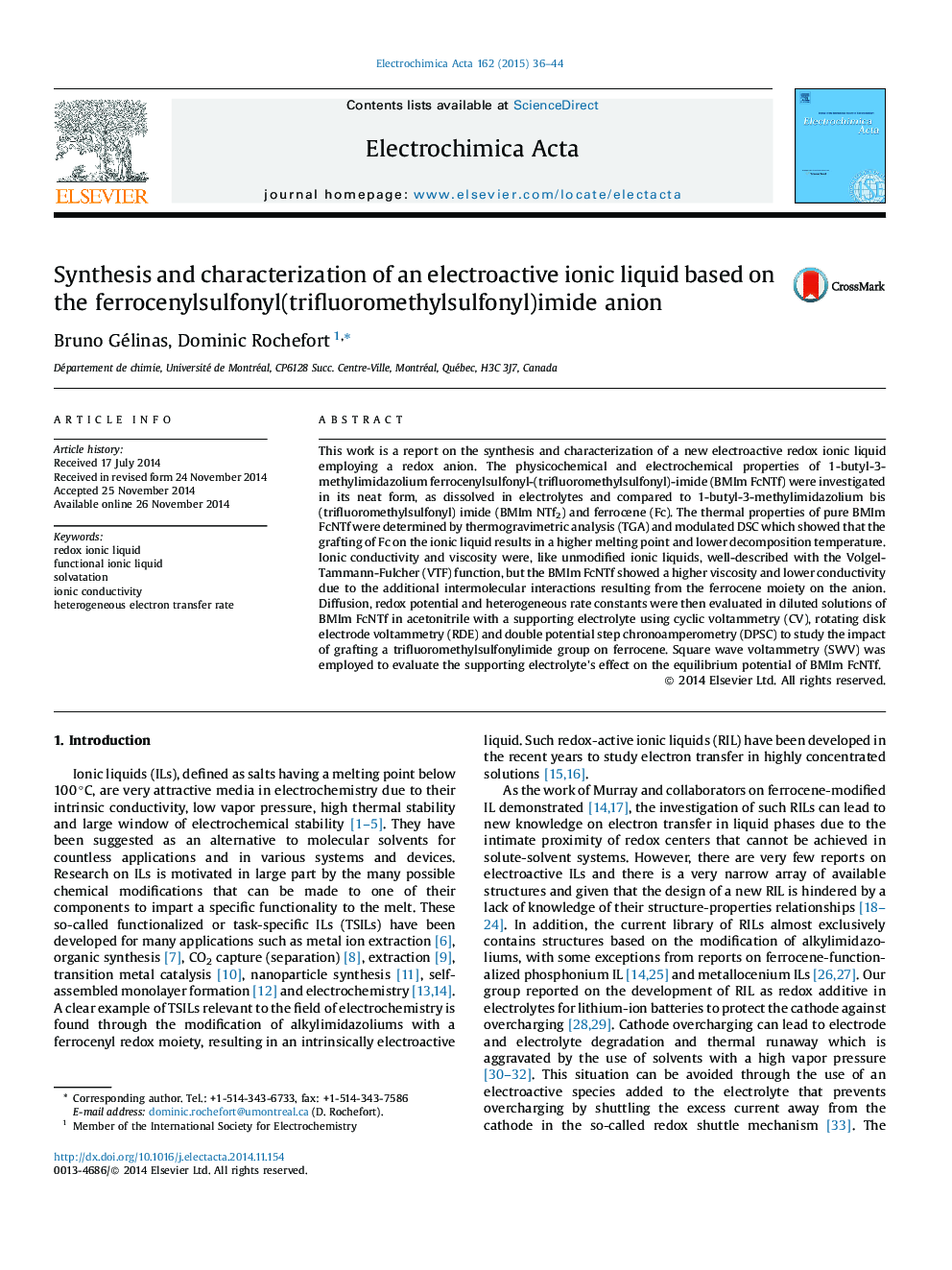| Article ID | Journal | Published Year | Pages | File Type |
|---|---|---|---|---|
| 184004 | Electrochimica Acta | 2015 | 9 Pages |
•A new redox ionic liquid is obtained by the modification of the NTf2 anion.•The equilibrium potential of BMIm FcNTf was found at +224 mV vs. Fc/Fc+.•Steric effect of anion decreased the transport and charge transfer rate of FcNTf.•Electrochemistry of self-supported BMIm FcNTf solutions showed film formation.
This work is a report on the synthesis and characterization of a new electroactive redox ionic liquid employing a redox anion. The physicochemical and electrochemical properties of 1-butyl-3-methylimidazolium ferrocenylsulfonyl-(trifluoromethylsulfonyl)-imide (BMIm FcNTf) were investigated in its neat form, as dissolved in electrolytes and compared to 1-butyl-3-methylimidazolium bis(trifluoromethylsulfonyl) imide (BMIm NTf2) and ferrocene (Fc). The thermal properties of pure BMIm FcNTf were determined by thermogravimetric analysis (TGA) and modulated DSC which showed that the grafting of Fc on the ionic liquid results in a higher melting point and lower decomposition temperature. Ionic conductivity and viscosity were, like unmodified ionic liquids, well-described with the Volgel-Tammann-Fulcher (VTF) function, but the BMIm FcNTf showed a higher viscosity and lower conductivity due to the additional intermolecular interactions resulting from the ferrocene moiety on the anion. Diffusion, redox potential and heterogeneous rate constants were then evaluated in diluted solutions of BMIm FcNTf in acetonitrile with a supporting electrolyte using cyclic voltammetry (CV), rotating disk electrode voltammetry (RDE) and double potential step chronoamperometry (DPSC) to study the impact of grafting a trifluoromethylsulfonylimide group on ferrocene. Square wave voltammetry (SWV) was employed to evaluate the supporting electrolyte's effect on the equilibrium potential of BMIm FcNTf.
Graphical abstractFigure optionsDownload full-size imageDownload as PowerPoint slide
